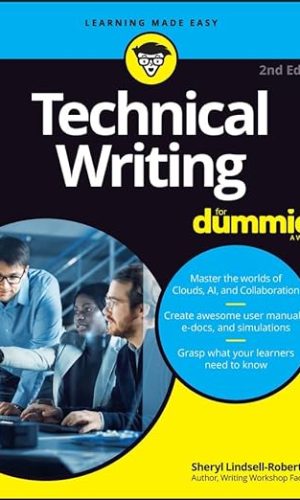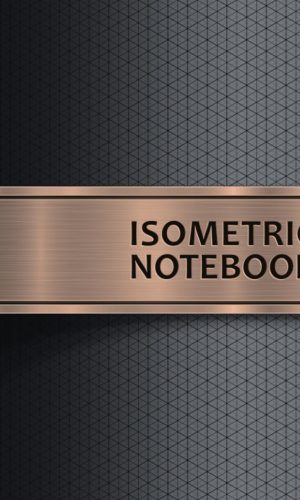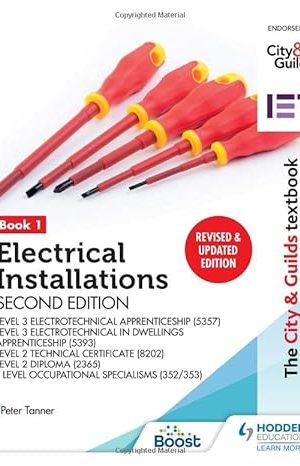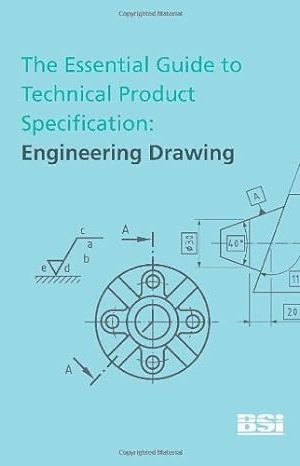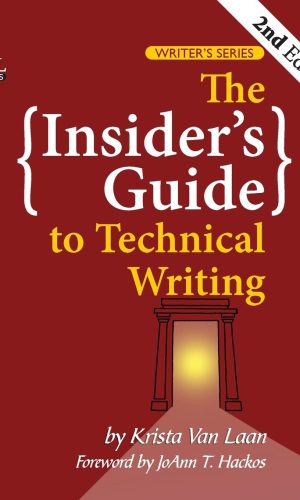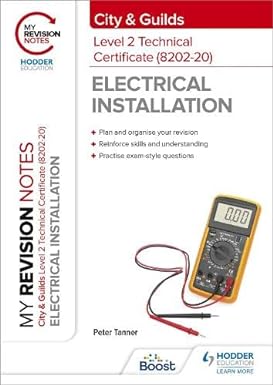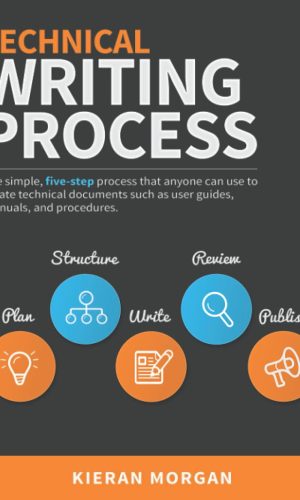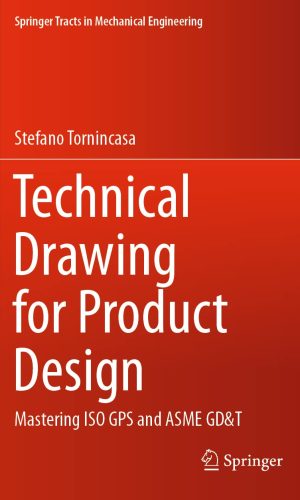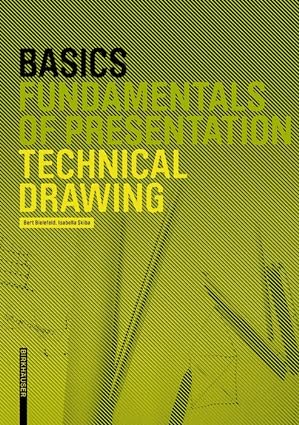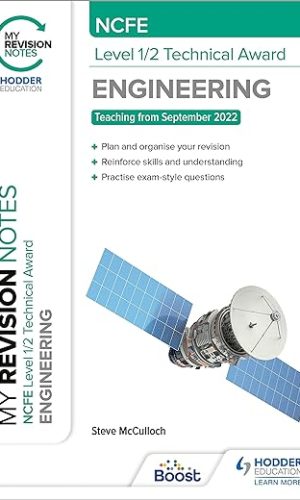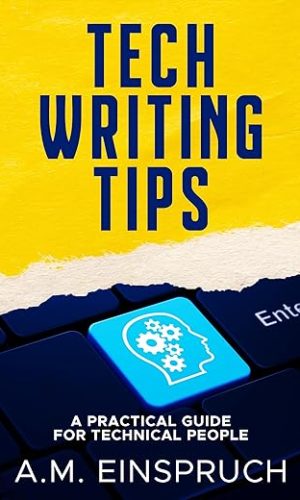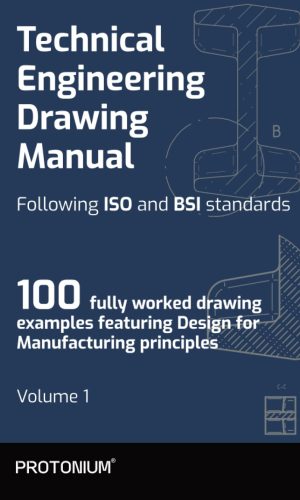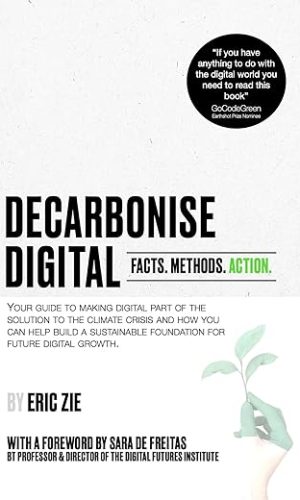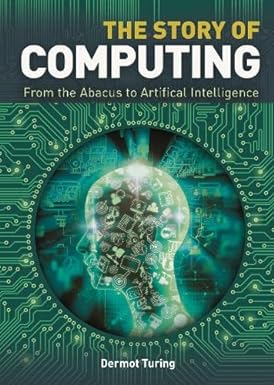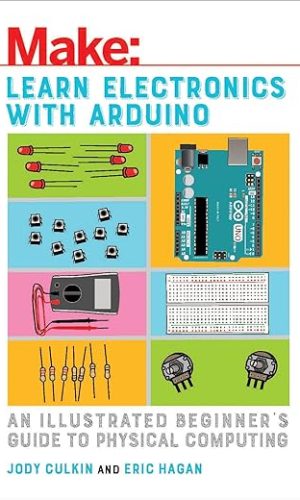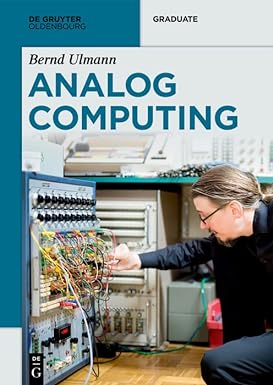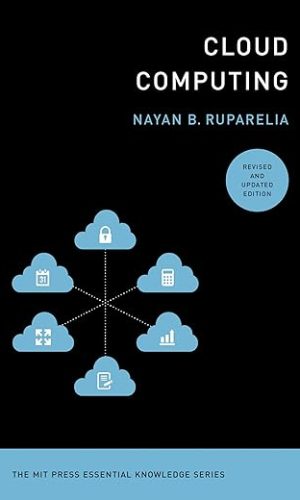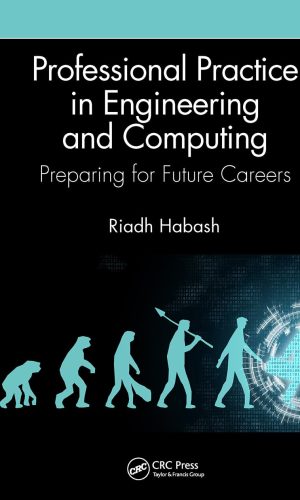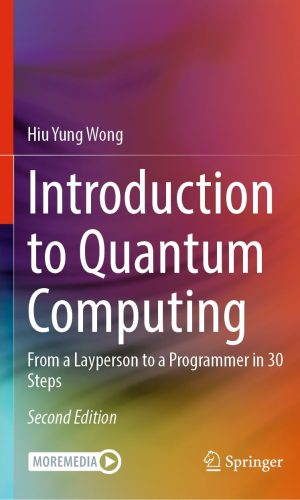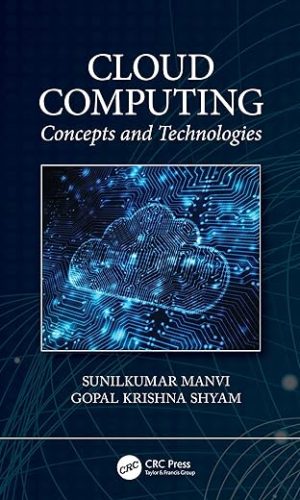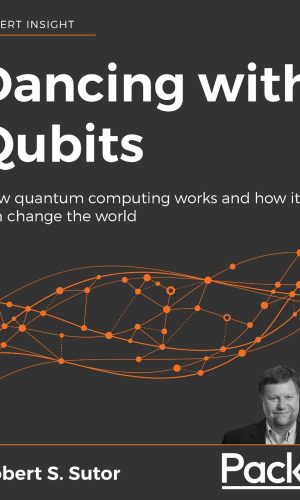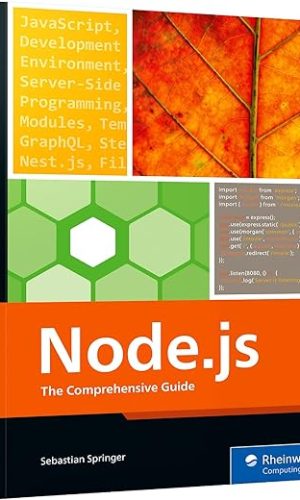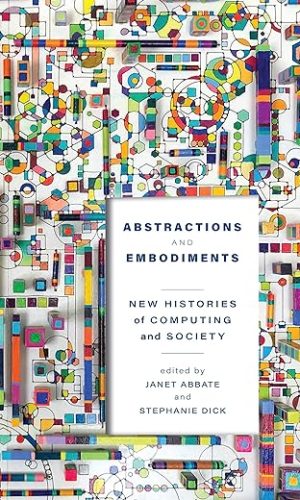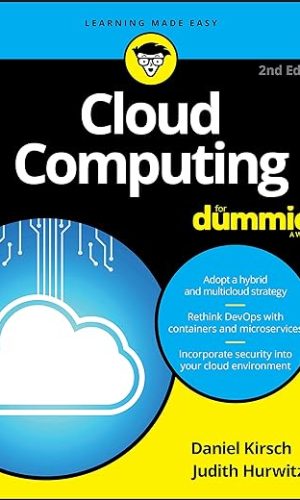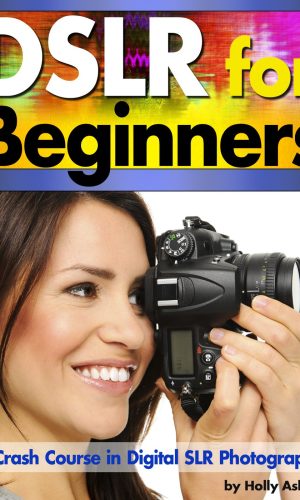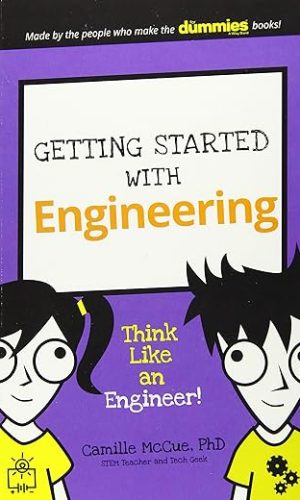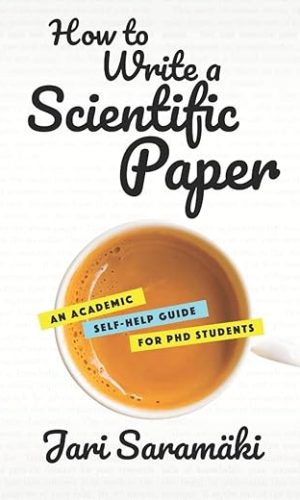Engineering & Technology
-
Technical Writing For Dummies
Learn to document the technology that makes the world go
Technical Writing For Dummies is a master class on how to build a career writing user manuals, e-learning, streaming, simulations, and more. It even zooms into the metaverse. Whether you’re new to the field, a seasoned professional, or a technical person who needs to write, this guide arms you with the skills you need to cash in on this flourishing world of technical writing. This isn’t your average how-to. It’s a compendium of innovative industry knowledge that will help you set yourself apart with the latest trends and best practices in technical writing. As a tech writer, you’ll need a robust skillset that allows you to offer clear and concise documentation for just about anything. This new edition of Technical Writing For Dummies—updated for all of today’s tech writing advances—can get you there.
- Uncover the basics of technical writing and master common documentation types
- Get insight into the career paths available to tech writers today
- Discover new remote collaboration options and cloud-based tools for technical writers
- Learn how to elevate your documents for high search engine optimization (SEO) rankings
- Improve your craft to connect with diverse, global audiences
Whether you’re a technical writer or technical professional who needs to write—you can learn the best practices of effective technical writing, as well as how to navigate its various formats and platforms, thanks to this handy Dummies guide.
Read more
£16.20 -
Isometric Notebook: Detailed Light Grid (1/4″ and 1/8″) for Easy 3D Drawing, Drafting, Technical Drawing and Sketching | 8.5″ x 11″ | 110 pages Graph Paper
Check out my author profile, you’ll find more interesting stylish notebooks there.This notebook will become a true assistant in your projects and will allow you to easily create technical drawings and visualizations.
The detailed isometric grid (1/4″ and 1/8″) with thin light lines is perfect for working with any drafting tools.Specifications:
⦁ Dimensions: 8.5″ x 11″
⦁ 110 pages
⦁ White paper
⦁ High-quality soft glossy coverCreated especially for you by our professional designers.
Good luck with your creatives!Read more
£5.00 -
Tank Gun Systems: The First Thirty Years, 1916 1945: A Technical Examination
Much has been written about the use of tanks in battle. Little, however, has appeared about the gunnery systems that are at their core. This book describes and examines the main gun systems of medium and heavy tanks from first use in 1916 in World War I to those fielded in numbers to the end of World War II in 1945, including tanks of the interwar period. Specifically considered are guns of a calibre greater than 35 mm, which have been deployed in numbers greater than 100. The emphasis is on guns mounted in turrets on heavier tracked armoured fighting vehicles (greater than 15 tonnes) which were considered tanks. There are, though, exceptions, in that the naval 6 pounder guns in First World War British tanks, as well as the 75 mm guns in French medium tanks of the same period (all turretless) are included. The treatment of gun systems includes sighting and fire control equipment, gun laying equipment, mounts and the array of munitions fired, as well as the actual gun, including its, barrel, cradle, breech, firing mechanism, sights and recoil system. Related to this are issues of gun handling (loading and unloading), ammunition design and rates of fire. Also examined are the maximum impulse and energy generated by firing some of the munitions available that must be absorbed by the gun recoil system.Read more
£27.30£33.30 -
The City & Guilds Textbook: Book 1 Electrical Installations, Second Edition: For the Level 3 Apprenticeships (5357 and 5393), Level 2 Technical … & T Level Occupational…
Equip yourself with the tools for success in Electrical Installations with this comprehensive and updated edition of our bestselling textbook, published in association with City & Guilds and IET.
– Study with confidence using the most up-to-date information available for the new industry standards, including the 2022 amendments to BS7671: 2018, The IET Wiring Regulations 18th edition
– Enhance your understanding of concepts in electrical installation with 100s of clear and accurate technical drawings and step-by-step photo sequences
– Get ready for the workplace with industry tips
– Prepare for your trade tests or end-of-year exams with end-of-chapter practice questions
– Engage with author Peter Tanner’s accessible text, drawing on his extensive industry experience
– Target your learning with detailed qualification mapping grids for the latest City & Guilds Level 2 qualifications – including the 2365, 8202, 5357 and 5393 specifications, as well as the 352 and 353 T Level occupational specialismsRead more
£32.50£36.10 -
The Essential Guide to Technical Product Specification. Engineering Drawing
This book has been produced as a companion to BS 8888, Technical product specification Specification, which is the definitive standard for technical product realisation. It offers straightforward guidance, together with pictorial representations, to all practitioners of technical product specification, providing the necessary tools to enable engineers engaged in design specification, manufacturing, and verification with the essential basic information required for specifying a product or component. As BS 8888 is being increasingly adopted in major sectors, particularly in defence contracts, so the need to use BS 8888 becomes more pressing. This publication presents up-to-date information on the technical drawing aspects of BS 8888, in a manner similar to the presentation in the old BS 308, and will help users trained in BS 308 to adapt to the new standards. It includes comprehensive sections extracted from and referenced to international standards relating to linear, geometric and surface texture dimensioning and tolerancing, together with the practice of welding symbology, limits and fits, and thread data. It also includes an illustrated index to all standards referenced in BS 8888.Read more
£41.80 -
The Insider’s Guide to Technical Writing
The first edition of Krista Van Laan’s popular The Insider’s Guide to Technical Writing has guided a generation of technical writers who are either starting out or seeking to take their skills to the next level. This classic has now been updated for the technical writer of today. Today’s tech writers truly are technical communicators, as they build information to be distributed in many forms.
Technical communication requires multiple skills, including an understanding of technology, writing ability, and great people skills. Wherever you are in your journey as a technical communicator, The Insider’s Guide to Technical Writing can help you be successful and build a satisfying career.
Read more
£25.90 -
My Revision Notes: City & Guilds Level 2 Technical Certificate in Electrical Installation (8202-20)
Unlock your full potential with this revision guide that will guide you through the content and skills you need to succeed in the City & Guilds Level 2 Technical Certificate in Electrical Installation (8202-20).
– Plan your own revision and focus on the areas you need to revise with key content summaries and revision activities for every topic
– Understand key terms you will need for the exam with user-friendly definitions and a glossary
– Breakdown and apply scientific and mathematic principles with clear worked examples
– Use the exam tips to clarify key points and avoid making typical mistakes
– Test yourself with end-of-topic questions and answers and tick off each topic as you complete it
– Get ready for the exam with tips on approaching the paper, and sample exam questions
—-‘A must for all Level 2 Electrical learners who wish to be successful. It allows students to expand on their basic knowledge to obtain a high score in their exams.’
– Neil McManus, Construction T Level Programme Area Manager, Leicester College
Read more
£14.20£15.20 -
Technical Writing Process: The simple, five-step guide that anyone can use to create technical documents such as user guides, manuals, and procedures
The Technical Writing Process is a simple, five-step process that can be used to create almost any piece of technical documentation such as a user guide, manual or procedure. It’s suitable for a wide range of audiences: aspiring technical writers and students of technical writing, non-writers who find themselves assigned with the task of creating technical documentation, established writers who want to bring more structure to their work, and anyone managing a documentation project.Read more
£16.70 -
Technical Drawing for Product Design: Mastering ISO GPS and ASME GD&T (Springer Tracts in Mechanical Engineering)
This book is intended for students, academics, designers, process engineers and CMM operators, and presents the ISO GPS and the ASME GD&T rules and concepts. The Geometric Product Specification (GPS) and Geometrical Dimensioning and Tolerancing (GD&T) languages are in fact the most powerful tools available to link the perfect geometrical world of models and drawings to the imperfect world of manufactured parts and assemblies. The topics include a complete description of all the ISO GPS terminology, datum systems, MMR and LMR requirements, inspection, and gauging principles. Moreover, the differences between ISO GPS and the American ASME Y14.5 standards are shown as a guide and reference to help in the interpretation of drawings of the most common dimensioning and tolerancing specifications.The book may be used for engineering courses and for professional grade programmes, and it has been designed to cover the fundamental geometric tolerancing applications as well as the more advanced ones. Academics and professionals alike will find it to be an excellent teaching and research tool, as well as an easy-to-use guide.Read more
£47.90£52.20 -
Basics Technical Drawing
Technical Drawing deals with the representation of plans throughout all phases of a project. For students, the primary focus is on the development and methodical construction of a technical drawing.
Themes:
- Types of plan (from site plan and preliminary drawings to design and detail plans)
- Components of the plan (floor plan, section, elevation, detail)
- Line width, dimensioning, hatching, use of text, symbols
- Plan presentation and compilation
Read more
£12.80Basics Technical Drawing
£12.80 -
My Revision Notes: NCFE Level 1/2 Technical Award in Engineering
Set students on track to achieve the best grade possible with My Revision Notes.
Our clear and concise approach to revision will help students learn, practise and apply their skills and understanding. Coverage of key content is combined with practical study tips and effective revision strategies to create a guide that can be relied on to build both knowledge and confidence.
My Revision Notes for NCFE Level 1/2 Technical Award in Engineering will help students:
– Consolidate knowledge with clear, concise and relevant content coverage, based on what examiners are looking for
– Reinforce understanding with our regular ‘Now Test Yourself’, tasks and answers
– Check and review knowledge and skills with revision activities that encourage note-taking and include real-world scenarios
– Improve technique through our increased exam support, including exam-style practice questions, expert tips and examples of typical mistakes to avoid
– Plan and manage a successful revision programme with our topic-by-topic planner, and exam breakdown features, user-friendly definitions and glossaryRead more
£10.40 -
My Revision Notes: City & Guilds Level 3 Advanced Technical Diploma in Electrical Installation (8202-30)
Unlock your full potential with this revision guide that will guide you through the knowledge and skills you need to succeed in the City & Guilds Level 3 Advanced Technical Diploma in Electrical Installation (8202-30).
– Plan your own revision and focus on the areas you need to revise with key content summaries and revision activities for every topic
– Understand key terms you will need for the exam with user-friendly definitions and a glossary
– Breakdown and apply scientific and mathematic principles with clear worked examples
– Use the exam tips to clarify key points and avoid making typical mistakes
– Test yourself with end-of-topic questions and answers and tick off each topic as you complete it
– Get ready for the exam with tips on approaching the paper, and sample exam questions—-
‘This book is long overdue. It deepens students’ understanding of concepts in electrical installation with clear and accurate technical drawings and images. The common mistakes made in exams feature is very useful and includes things that are often overlooked by delivery staff. The revision guide will prepare students for their end exam and is a great way of learners improving their grades, with stretch and challenging exam-style questions and good exam tips.’
– Neil McManus, Construction T Level Programme Area Manager, Leicester CollegeRead more
£15.20£16.10 -
Tech Writing Tips: A Practical Guide for Technical People
Struggling to write technical documents? Learn practical tips that transform this complicated task into a clear and simple process.
Tech Writing Tips: A Practical Guide for Technical People is a comprehensive, yet accessible, handbook that simplifies the process of writing technical documents. Filled with useful examples, easy-to-follow explanations, and interesting insights, this guide makes technical writing enjoyable and can be immediately applied to your specific work. By implementing these techniques, you’ll soon see improvements in your documents, making them clearer, more concise, and effective.
Read Tech Writing Tips to transform your technical writing and create better documents.
Read more
£6.60 -
Technicals: Non-Standard Tactical Vehicles from the Great Toyota War to modern Special Forces (New Vanguard)
Over the last 30 years, the ‘technical’ or armed pick-up truck has become arguably the most ubiquitous military land vehicle of modern warfare.
Harking back to the armed Jeeps and Chevrolet trucks of the SAS and Long Range Desert Group in North Africa in World War II, the world’s first insurgent technicals were those of the Sahrawi People’s Liberation Army in Algeria in the late 1970s, followed by the Chadian use of technical in the so-called Toyota War against Libya. Since then, technicals have seen use in Somalia, Iraq, Afghanistan and Libya, as well as being used by Western and Russian Special Forces.
Fully illustrated with commissioned artwork and providing rigorous analysis, this is the first history of how this deceptively simple fighting vehicle has been used and developed in conflicts worldwide.
Read more
£10.10£11.40 -
Ace The Technical Pilot Interview 2/E (AVIATION)
Publisher’s Note: Products purchased from Third Party sellers are not guaranteed by the publisher for quality, authenticity, or access to any online entitlements included with the product.
Get your career off the ground with this updated guide to acing the technical pilot interview!Written by an experienced airline pilot, Ace the Technical Pilot Interview, Second Edition is filled with more than 1000 questions and answers, many of them all-new. This practical study tool asks the right questions so you’ll know the right answers. It’s a must-have, one-stop resource for all pilots, regardless of aircraft type, performance, or global region.
Ace the Technical Pilot Interview, Second Edition helps you:
- Review the material most likely to be asked on your interview
- Practice with 1000+ exam-style questions–complete with answers
- Learn about the latest technologies, including CPDLC (Controller Pilot Data Link Communications) and ADS (Automatic Dependent Surveillance)
- Focus your study on what you need to know
COVERAGE INCLUDES:
Aerodynamics * Engines * Jet and propeller aircraft differences * Navigation * Atmosphere and speed * Aircraft instruments and systems * Performance and flight planning * Meteorology and weather recognition * Flight operations and technique * Human performance * Type-specific questionsRead more
£22.30 -
Technical Engineering Drawing Manual Following ISO and BSI standards – Volume 1: 100 fully worked drawing examples featuring Design for Manufacturing principles
We use real-life scenarios to show what happens in day-to-day product development. The book’s examples are driven by Design For Manufacturing (DfM), Systems Thinking, User-Centred Design, realistic tolerances and drawing annotations.This book gives every product designer, engineer, maker and manufacturer the skills to document, create and understand technical drawings: readers will benefit from this book regardless of their experience level.
The 100 examples apply to any industry: from robotics and medical devices to machinery and aerospace. We address outdated practices from old standards that have no place in modern times, but we still find them in most design offices.
Throughout the book, we use proven design workflows to help you develop mechanical systems cost-effectively, integrating ISO standards for technical annotation and document management. The workflows include document revision control, ISO and BS 8888: 2020 compliance, Bill of Materials (BOM), part dimensioning and tolerancing.
PROTONIUM dedicates its efforts to spreading manufacturing knowledge that conditions parts’ design and how they are made. We believe that by designing with DfM considerations and thorough technical documentation, engineering companies and manufacturers can reduce the iteration cycles, minimise the use of raw materials, reduce their carbon footprint and break into the market faster.
Introducing this book into a company’s training workflow will have several operational positive impacts:
• Engineering managers can bring consistent training by providing the engineers with the means to develop their design for manufacturing skills.
• Project managers will de-risk design deliverables and keep the project’s cost lower as designs are cost-effective to manufacture.
• Supply Chain professionals will get faster supplier quotes because designs are manufacturable.
• Designers will iterate less and deliver faster because their designs are developed in fewer iterations as the features can be manufactured.
• Companies will reduce development costs and increase quality in tandem with elevating the agility to react to market changes.Read more
£61.80 -
Decarbonise Digital: Facts. Methods. Action.
Look around, and it is clear that we now live in an increasingly digital world. Everywhere we turn, we hear talk of Future Cities, Smart Technology, Artificial Intelligence, Big Data, and Generative AI. Technology and digital solutions are here and growing, with the social, educational, health, and business value of technology unquestionable. But behind the scenes, this growth has a carbon cost that has remained invisible to most of us.
The time has come to start focusing on on reducing the energy consumption of digital and the technological infrastructures, which underpin nearly all of our daily activities. Having spent the last two years engaging with some of the world’s leading cloud service providers, software companies, digital leaders, technology consultancies, and system integrators, I am now of the firm belief that we have an opportunity that could propel the technology sector to the forefront of decarbonisation .
The book is organised into five major parts covering:
- A Foundation section providing an overview of climate change and the impact of digital
- A more detailed Sustainable Software Engineering principles and practices section aimed at providing an in-depth view of the techniques that can be used to deliver greener software products
- An introduction to Green Design to help guide the sustainability of digital products and services even before coding commences
- A Sustainable IT for Technology Leaders section to help readers shape a sustainable IT strategy and consider the process and technology elements needed to be successful
- A People and Culture section to help you consider the importance of building capability, the challenges of eco-anxiety and organisation structure to deliver a Sustainable IT Strategy
Whether you are a software engineer, a designer, an IT leader or manager, we will provide you with practical examples and online self-assessments to help you evaluate your own level of understanding and readiness to take action.
We are now able to hold up a mirror, and what we all need is for you to gaze in it and seize the opportunity to create an even better, faster, more efficient, and planet-friendly version of your incredible digital solutions.
The technology industry is filled with some of the brightest individuals in the world. We are a group of doers, and uniquely capable due to our inventiveness, innovation mindset, and pure determination to solve problems. We must abandon the notion that taking action will necessitate slowing things down or regressing to a less polluting version of the past. In our digital world, we must be progressive in our actions and utilise technological advancements to create the efficiencies required to support the development of digital. But we must recognise that we can only satisfy the technological demands of societies and businesses if we base this expansion on a more sustainable IT industry.
In our digital world we must move forward, our actions be progressive, and able to utilise the advancements in technology to create the efficiencies needed to support the growth of digital.
Read more
£19.00 -
The Story of Computing
Today computers shape every aspect of our lives. In our pockets, we carry mobile phones with computing power that was unimaginable just 50 years ago. Many industries are embracing the promises – and the risks – of artificial intelligence. The world is changing faster than ever, and computing is at the heart of technological development.
Dermot Turing explores the history of this rapidly evolving technology, from the Charles Babbage and his experiments with steam powered calculators to the computerised Go champion, AlphaGo. Featuring wonderful, full-colour images which illustrate this history, The Story of Computing is the essential guide to a subject that none of us can ignore.
Topics include:
• The birth of the computer
• Codebreaking in World War II
• Innovations in hardware and software
• Artificial intelligence
• The internet
• The challenges of cybersecurity.Read more
£8.70£9.50The Story of Computing
£8.70£9.50 -
Learn Electronics with Arduino: An Illustrated Beginner’s Guide to Physical Computing (Make: Technology on Your Time)
This book is your introduction to to physical computing with the Arduino microcontroller platform. No prior experience is required, not even an understanding of basic electronics. With color illustrations, easy-to-follow explanations, and step-by-step instructions, the book takes the beginner from building simple circuits on a breadboard to setting up the Arduino IDE and downloading and writing sketches to run on the Arduino. Readers will be introduced to basic electronics theory and programming concepts, as well as to digital and analog inputs and outputs. Throughout the book, debugging practices are highlighted, so novices will know what to do if their circuits or their code doesn’t work for the current project and those that they embark on later for themselves. After completing the projects in this book, readers will have a firm basis for building their own projects with the Arduino. Written for absolute beginners with no prior knowledge of electronics or programming Filled with detailed full-color illustrations that make concepts and procedures easy to follow An accessible introduction to microcontrollers and physical computing Step-by-step instructions for projects that teach fundamental skills Includes a variety of Arduino-based projects using digital and analog input and outputRead more
£16.70£19.00 -
AI & Quantum Computing for Finance & Insurance: Fortunes and Challenges for China and America (Singapore University of Social Sciences – World Scientific Future Economy Series -…
This book offers a framework and analysis for the current technological landscape between the United States and China across the financial and insurance sectors as well as emerging technologies such as AI, Blockchain, Cloud and Data Analytics and Quantum Computing (ABCDQ). Based on original lecture slides used by the authors, the book presents contemporary and critical views of emergent technologies for a wide spectrum of readers from CEOs to university lecturers to students. The narrative aims to help readers upgrade their technology literacy and to overcome the fear of AI posed by our lizard brain.
Read more
£77.80£80.80 -
Analog Computing (De Gruyter Textbook)
Analog computing is one of the main pillars of Unconventional Computing. Almost forgotten for decades, we now see an ever-increasing interest in electronic analog computing because it offers a path to high-performance and highly energy-efficient computing. These characteristics are of great importance in a world where vast amounts of electric energy are consumed by today’s computer systems. Analog computing can deliver efficient solutions to many computing problems, ranging from general purpose analog computation to specialised systems like analog artificial neural networks.
The book “Analog Computing” has established itself over the past decade as the standard textbook on the subject and has been substantially extended in this second edition, which includes more than 300 additional bibliographical entries, and has been expanded in many areas to include much greater detail. These enhancements will confirm this book’s status as the leading work in the field. It covers the history of analog computing from the Antikythera Mechanism to recent electronic analog computers and uses a wide variety of worked examples to provide a comprehensive introduction to programming analog computers. It also describes hybrid computers, digital differential analysers, the simulation of analog computers, stochastic computers, and provides a comprehensive treatment of classic and current analog computer applications. The last chapter looks into the promising future of analog computing.
Read more
£70.10 -
Cloud Computing, revised and updated edition (MIT Press Essential Knowledge)
An updated, revised, and comprehensive overview of the concepts related to cloud computing, including recent applications, innovations, and its future evolution.In this Essential Knowledge volume, Nayan B. Ruparelia provides an updated and revised version of Cloud Computing, first published in 2016, to address not only the fact that cloud computing has become a ubiquitous part of mainstream computing since then but also has made strides in other key aspects of the technology’s development, including:
- cloud computing’s history,
- updated security fundamentals that provide examples of Identity and Access Management (IAM) use that illustrate the difference between on-premise (i.e., conventional) security and cloud-based security implementation and Security Information and Event Management SIEM),
- an updated discussion of data migration to the cloud,
- a new chapter on data integrity,
- cloud native computing,
- the use of microservice design patterns,
- cloud automation using orchestrators and tools such as Kubernetes,
- a comparison of common public clouds (Microsoft Azure, Google Cloud Platform, and Amazon AWS),
- and a future outlook for cloud computing.
An indispensable guide to cloud computing for the layperson, Cloud Computing cuts through the technical jargon and details that are irrelevant to nontechnologists, as well as the marketing hype, and explains clearly what cloud computing is, when to use it (and when not to), how to select a cloud service, how to integrate it with other technologies, and what the best practices are for its adoption.
Read more
£11.70£15.20 -
Professional Practice in Engineering and Computing: Preparing for Future Careers
This book has been developed with an intellectual framework to focus on the challenges and specific qualities applicable to graduates on the threshold of their careers. Young professionals have to establish their competence in complying with multifaceted sets of ethical, environmental, social, and technological parameters. This competence has a vital impact on the curricula of higher education programs, because professional bodies today rely on accredited degrees as the main route for membership.
Consequently, this four-part book makes a suitable resource for a two-semester undergraduate course in professional practice and career development in universities and colleges. With its comprehensive coverage of a large variety of topics, each part of the book can be used as a reference for other related courses where sustainability, leadership, systems thinking and professional practice are evident and increasingly visible.
Features
- Identifies the values that are unique to the engineering and computing professions, and promotes a general understanding of what it means to be a member of a profession
- Explains how ethical and legal considerations play a role in engineering practice
- Discusses the importance of professional communication and reflective practice to a range of audiences
- Presents the practices of leadership, innovation, entrepreneurship, safety and sustainability in engineering design
- Analyzes and discusses the contemporary practices of project management, artificial intelligence, and professional career development.
Read more
£42.70 -
Introduction to Quantum Computing: From a Layperson to a Programmer in 30 Steps
This textbook introduces quantum computing to readers who do not have much background in linear algebra based on the self-study experience of the author as an engineer. The author targets undergraduate and master students who are willing to spend about 60 -90 hours seriously learning quantum computing. This book is also suitable for self-study and teaching videos for each chapter and more than 200 exercises with answers are provided. Readers will be able to write their program to simulate quantum computing algorithms and run on real quantum computers on IBM-Q. Moreover, unlike books that only give superficial, “hand-waving” explanations, this book uses exact formalism so readers can continue to pursue more advanced topics based on what they learn from this bookRead more
£31.30 -
Cloud Computing: Concepts and Technologies
Comprehensive and timely, Cloud Computing: Concepts and Technologies offers a thorough and detailed description of cloud computing concepts, architectures, and technologies, along with guidance on the best ways to understand and implement them. It covers the multi-core architectures, distributed and parallel computing models, virtualization, cloud developments, workload and Service-Level-Agreements (SLA) in cloud, workload management. Further, resource management issues in cloud with regard to resource provisioning, resource allocation, resource mapping and resource adaptation, ethical, non-ethical and security issues in cloud are followed by discussion of open challenges and future directions.
This book gives students a comprehensive overview of the latest technologies and guidance on cloud computing, and is ideal for those studying the subject in specific modules or advanced courses. It is designed in twelve chapters followed by laboratory setups and experiments. Each chapter has multiple choice questions with answers, as well as review questions and critical thinking questions. The chapters are practically-focused, meaning that the information will also be relevant and useful for professionals wanting an overview of the topic.
Read more
£28.90 -
Mathematics of Quantum Computing: An Introduction
This textbook presents the elementary aspects of quantum computing in a mathematical form. It is intended as core or supplementary reading for physicists, mathematicians, and computer scientists taking a first course on quantum computing. It starts by introducing the basic mathematics required for quantum mechanics, and then goes on to present, in detail, the notions of quantum mechanics, entanglement, quantum gates, and quantum algorithms, of which Shor’s factorisation and Grover’s search algorithm are discussed extensively. In addition, the algorithms for the Abelian Hidden Subgroup and Discrete Logarithm problems are presented and the latter is used to show how the Bitcoin digital signature may be compromised. It also addresses the problem of error correction as well as giving a detailed exposition of adiabatic quantum computing. The book contains around 140 exercises for the student, covering all of the topics treated, together with an appendix of solutions.
Read more
£63.70£66.50Mathematics of Quantum Computing: An Introduction
£63.70£66.50 -
Dancing with Qubits: How quantum computing works and how it can change the world
Explore the principles and practicalities of quantum computing
Key Features
- Discover how quantum computing works and delve into the math behind it with this quantum computing textbook
- Learn how it may become the most important new computer technology of the century
- Explore the inner workings of quantum computing technology to quickly process complex cloud data and solve problems
Book Description
Quantum computing is making us change the way we think about computers. Quantum bits, a.k.a. qubits, can make it possible to solve problems that would otherwise be intractable with current computing technology.
Dancing with Qubits is a quantum computing textbook that starts with an overview of why quantum computing is so different from classical computing and describes several industry use cases where it can have a major impact. From there it moves on to a fuller description of classical computing and the mathematical underpinnings necessary to understand such concepts as superposition, entanglement, and interference. Next up is circuits and algorithms, both basic and more sophisticated. It then nicely moves on to provide a survey of the physics and engineering ideas behind how quantum computing hardware is built. Finally, the book looks to the future and gives you guidance on understanding how further developments will affect you.
Really understanding quantum computing requires a lot of math, and this book doesn’t shy away from the necessary math concepts you’ll need. Each topic is introduced and explained thoroughly, in clear English with helpful examples.
What you will learn
- See how quantum computing works, delve into the math behind it, what makes it different, and why it is so powerful with this quantum computing textbook
- Discover the complex, mind-bending mechanics that underpin quantum systems
- Understand the necessary concepts behind classical and quantum computing
- Refresh and extend your grasp of essential mathematics, computing, and quantum theory
- Explore the main applications of quantum computing to the fields of scientific computing, AI, and elsewhere
- Examine a detailed overview of qubits, quantum circuits, and quantum algorithm
Who this book is for
Dancing with Qubits is a quantum computing textbook for those who want to deeply explore the inner workings of quantum computing. This entails some sophisticated mathematical exposition and is therefore best suited for those with a healthy interest in mathematics, physics, engineering, and computer science.
Table of Contents
- Why Quantum Computing?
- They’re Not Old, They’re Classics
- More Numbers than You Can Imagine
- Planes and Circles and Spheres, Oh My
- Dimensions
- What Do You Mean “Probably”?
- One Qubit
- Two Cubits, Three
- Wiring Up the Circuits
- From Circuits to Algorithms
- Getting Physical
- Questions about the Future
Read more
£38.00£42.70 -
Node.js: The Comprehensive Guide (Rheinwerk Computing)
If you’re developing server-side JavaScript applications, you need Node.js! Start with the basics of the Node.js environment: installation, application structure, and modules. Then follow detailed code examples to learn about web development using frameworks like Express and Nest.js. Learn about different approaches to asynchronous programming, including RxJS and data streams. Details on peripheral topics such as testing, security, performance, and more, make this your all-in-one daily reference for Node.js! · Your complete guide to backend programming with JavaScript· Install the Node.js environment and learn to use core frameworks· Debug, scale, test, and optimize your applications· Get practical code examples as downloadable product supplements Getting Started with Node.js Begin your journey with Node.js. Learn about the core components of the environment such as the V8 engine and libraries. Then install Node.js and explore application development tools and the module system. Developing Applications Develop web applications by following practical code examples. Set up a web server using HTTP and develop apps step by step using the Express and Nest.js frameworks. Connect databases, generate interfaces using the REST server and GraphQL, implement command-line tools, handle asynchronous programming, and more. Managing ApplicationsManage your Node.js applications from development to deployment. Learn how to use package managers, implement tests, and protect against security threats. Get expert tips on scalability and performance to optimize your apps. What used to sound unimaginable is possible with Node.js: a single language for client-side and server-side programming. Today, you can use JavaScript for frontend and backend development. This allows you to develop high-performance, scalable, and real-time web applications quickly and easily. No wonder Node.js is becoming more and more popular. This comprehensive guide is the perfect place to start if you want to master Node.js, one of the most important players in the JavaScript universe. You’ll learn the basics of Node.js, see how the platform is built, and work with various interfaces. With Sebastian Springer, you have an experienced author at your side who shares his enthusiasm about professional JavaScript development. Using many real-life examples, he shows you how to use Node.js securely, right from the start. This book covers key JavaScript features like destructuring, promises, and the module system. However, the focus is on Node.js, so you should have basic knowledge of JavaScript before reading. This book includes: 1) More than 800 pages on Node.js 2) Concrete solutions for practical use cases 3) Detailed, numbered code listings 4) Tables, figures, note boxes, and screenshots 5) A comprehensive index6) All code examples available as downloadable supplements The structure of the book: To help structure your learning process, you can think of the book as having four distinct parts:· The first part covers the Node.js basics and provides a hands-on introduction to the module system. · The second part provides practical examples from web development. You’ll learn about important frameworks such as Express and template engines like Pug. · The third part is dedicated to asynchronous programming. You’ll learn how to deal with promises and child processes, and also how to use data streams in development. · The fourth part offers best practices and troubleshooting tips for developers. You’ll find valuable knowledge for everyday developer tasks, solutions for common problems, and security considerations. Highlights:- Installation
- Asynchronous programming
- Application development
- Modules
- Express and Nest.js frameworks
- Template engines
- Database connectivity
- Web sockets
- Session handling
- Deployment and operations
- Security
- Testing, performance, and scalability
Read more
£46.60£51.30 -
Understanding Your ZX81 ROM (28) (Retro Reproductions)
Launched in 1981, Sir Clive Sinclair’s ZX81 – successor to his ZX80 released the year before – was designed to be a low-cost introduction to home computing for the general public. It was a hugely successful machine, with over one and a half million ‘official’ units being sold; many more unauthorised ‘clones’ were also produced, particularly in Russia and other Eastern Bloc countries of the era. One could either purchase the machine pre-built, or – as a significant number of consumers did – buy it in kit form for assembly at home at a slightly cheaper price. This ‘DIY’ approach, encouraged by Sinclair Research, became a core element of the computer’s genetic make-up. Those who were comfortable putting together the four silicon chips and other such components were just as keen to poke around the machine’s memory, learning as much as they could about its capability; the programs they would write could easily be shared once saved onto a standard audio cassette.
This book helps the reader truly understand how the ZX81 works, with sections covering everything from the structure of the Z80 microprocessor used in the machine to the computer’s registers, ALU and more.
With an introduction to both binary and hex, Understanding Your ZX81 ROM helped many people get the most out of their machine in the very earliest days of home computing.
Read more
£9.50 -
101 Unplugged Activities for your Coding or STEM Club: Engaging activities for children aged 7 and up
Let’s make clubs collaborative…
The perfect book for club leaders is here…101 Unplugged Activities for your Coding or STEM Club! We are aware that collaboration can be difficult for some clubs especially where the main activity is individual or in pairs. This book will be a valuable addition to your club library and is jam-packed with activities to get makers moving, making music, storytelling, solving puzzles and much more.
Let’s help makers focus…
Often coming at the end of the day or after a long week, makers may find it hard to focus on a coding or STEM project. This book provides short energising activities that require little or no preparation. Better still, the activities can be completed with only a few common materials found in club settings.
Who are we?…
We’re a team of computing experts with decades of experience teaching, running clubs and leading hack events.
This book is full of tried and tested, activities that we have used in our clubs over the years. We know from experience how beneficial these activities were to our makers and we want to pass on our most beloved activities to you.
Why we’re different…
There are many coding projects and workbooks available online or for your library but few mention the importance of unplugged icebreakers to create the best club environment for young people to be creative and grow.
We use the term ‘unplugged’ to mean away from the computers. The activities in this book do not require a computer or any specialist equipment to run. Any resources required are low cost and are typically available in a club setting.
‘101 Unplugged Activities for your Coding or STEM Club’ features:
✔ 9 chapters of activities split by theme
✔ Clear preparation and activity time values
✔ At a glance material lists where required
✔ Ways to build on each activity to provide additional value (202 activities for the price of 101)!
✔ A bonus 101st activity to help your makers enjoy this book for years to come
Buy this book today and enhance the club experience for your makers.
Read more
£12.30 -
Abstractions and Embodiments: New Histories of Computing and Society (Studies in Computing and Culture)
Cutting-edge historians explore ideas, communities, and technologies around modern computing to explore how computers mediate social relations.
Computers have been framed both as a mirror for the human mind and as an irreducible other that humanness is defined against, depending on different historical definitions of “humanness.” They can serve both liberation and control because some people’s freedom has historically been predicated on controlling others. Historians of computing return again and again to these contradictions, as they often reveal deeper structures.
Using twin frameworks of abstraction and embodiment, a reformulation of the old mind-body dichotomy, this anthology examines how social relations are enacted in and through computing. The authors examining “Abstraction” revisit central concepts in computing, including “algorithm,” “program,” “clone,” and “risk.” In doing so, they demonstrate how the meanings of these terms reflect power relations and social identities. The section on “Embodiments” focuses on sensory aspects of using computers as well as the ways in which gender, race, and other identities have shaped the opportunities and embodied experiences of computer workers and users. Offering a rich and diverse set of studies in new areas, the book explores such disparate themes as disability, the influence of the punk movement, working mothers as technical innovators, and gaming behind the Iron Curtain.
Abstractions and Embodiments reimagines computing history by questioning canonical interpretations, foregrounding new actors and contexts, and highlighting neglected aspects of computing as an embodied experience. It makes the profound case that both technology and the body are culturally shaped and that there can be no clear distinction between social, intellectual, and technical aspects of computing.
Contributors: Janet Abbate, Marc Aidinoff, Troy Kaighin Astarte, Ekaterina Babinsteva, André Brock, Maarten Bullynck, Jiahui Chan, Gerardo Con Diaz, Liesbeth De Mol, Stephanie Dick, Kelcey Gibbons, Elyse Graham, Michael J. Halvorson, Mar Hicks, Scott Kushner, Xiaochang Li, Zachary Loeb, Lisa Nakamura, Tiffany Nichols, Laine Nooney, Elizabeth Petrick, Cierra Robson, Hallam Stevens, Jaroslav Švelch
Read more
£24.90 -
Computing with Quantum Cats: From Alan Turing to Teleportation: From Colossus to Qubits
Pioneering study of the science behind quantum computing and what the new quantum reality will mean for mankind.
The quantum computer is no longer the stuff of science fiction. Pioneering physicists are on the brink of unlocking a new quantum universe which provides a better representation of reality than our everyday experiences and common sense ever could. The birth of quantum computers — which, like Schrödinger’s famous ‘dead and alive’ cat, rely on entities like electrons, photons or atoms existing in two states at the same time — is set to turn the computing world on its head.
In his fascinating study of this cutting-edge technology, John Gribbin updates his previous views on the nature of quantum reality, arguing for a universe of many parallel worlds where ‘everything is real’. Looking back to Alan Turing’s work on the Enigma machine and the first electronic computer, Gribbin explains how quantum theory developed to make quantum computers work in practice as well as in principle. He takes us beyond the arena of theoretical physics to explore their practical applications — from machines which learn through ‘intuition’ and trial and error to unhackable laptops and smartphones. And he investigates the potential for this extraordinary science to create a world where communication occurs faster than light and teleportation is possible.Read more
£9.50 -
Cloud Computing For Dummies
Get your head―and your business―into the Cloud
Cloud computing is no longer just a clever new toy in the world of IT infrastructure. Despite the nebulous name, it’s become a real and important part of our information architecture―and tech professionals who ignore it or try to skim their way through risk falling behind rapidly. The new edition of Cloud Computing For Dummies gets you up to speed fast, clarifying your Cloud options, showing you where can save you time and money, giving you ways to frame your decisions, and helping you avoid weeks of research.
In a friendly, easy-to-follow style, Cloud Computing For Dummies, 2nd Edition demystifies the Cloud’s virtual landscape, breaking up a complex and multi-layered topic into simple explanations that will make the various benefits clear and ultimately guide you toward making the most appropriate choices for your organization.
- Know the business case for the Cloud
- Understand hybrid and multi-cloud options
- Develop your Cloud strategy
- Get tips on best practices
The Cloud is everywhere, and it can deliver amazing benefits to our lives and businesses. Get a much clearer vision of exactly how with Cloud Computing For Dummies―and you’ll begin to see that the sky really is the limit!
Read more
£21.80£28.50Cloud Computing For Dummies
£21.80£28.50 -
Open Circuits: The Inner Beauty of Electronic Components
a photographic exploration of the beautiful design inside everyday electronics. Its stunning cross-section photography unlocks a hidden world full of elegance, subtle complexity, and wonder.
Our phones, computers, and appliances are made of hundreds of internal components, each precisely engineered, but none intended to be seen. Through painstakingly executed, vividly detailed cross-section photography, Open Circuits reveals the surprising beauty hiding inside the electronic components that drive our everyday devices. From resistors to LEDs, USB cables to headphone jacks, the book’s arresting imagery transforms more than 130 components into delightful works of art. As you visually dissect the components’ insides, you’ll learn about how they work and how they were made.
Read more
£23.80£36.10 -
Drone Photography Basics for Everyone: The simplified techniques of flying, handling, and maintaining a drone from scratch to finish even as a novice or professionals drone…
Drone Photography Basics for everyone
The simplified techniques of flying, handling, and maintaining a drone from scratch to finish even as a novice or
professionals drone photographerDrones have changed the face of photography. Their rotor-driven quadcopter adaptability allows them to capture new angles
and compositions that would have been impossible or prohibitively expensive for the average photographer earlier. Even yet,
learning to fly a drone, paying for it, and complying with legal requirements might be daunting.
Drones can offer up a wide range of possibilities for you to explore if you’re an expert or novice photographer. To improve
as a photographer, you must shoot more images. The more time you spend flying, the better you get.
Do you know you can buy,master,fly and maintain a drone within few days?
Do you know the modern cameras for drone operation?
Some vital topics captured in this book for your perusals are;
Drone photography’s difficulties, Drone photography’s shot from different view, Cost of buying a drone , Drone terminology,
How to begin using a drone to take aerial photographs, Editing and post-production tips for drone photography, Drone
maintenance guide, Guide to fly the drone, what to consider before buying a drone camera, and lots more!
Drone important is now notice in our present days compare to the past. since it is highly demanded, it is good you know
how to professionally operate drone for personal or military operations because it will give you financial freedom.
This professional guide for everyone seeking for more knowledge on handling, flying, and maintaining drone from scratch to
finish is clearly written in this book.
This and many other mind blowing fact about drone are careful written down on this book for your perusal.
Download this book by scrolling up and clicking Buy now to get your copy!Read more
£7.00 -
DSLR For Beginners: A Crash Course in Digital SLR Photography ~ How to Take Better Photos by Understanding Digital Photography Basics
If you’re ready to learn how to use all those fancy functions of your new digital SLR camera so that you can have more control over the pictures you take, then this book is for you!
Read on your PC, Mac, smartphone, tablet, or Kindle device.
Let me guess: You recently got a new DSLR camera, and in all your excitement, you tossed the manual somewhere and then went out to take pictures. Of course, similar to a “point-and-shoot” camera, anybody can take a fairly decent image using the Auto setting, because the camera does all of the work for you! However, with Auto mode, you’ll soon find yourself frustrated at the lackluster quality the photographs have. Auto mode simply doesn’t give you enough control over your image.
Believe it or not, photography is actually a hard skill to learn. The biggest obstacle is that people often feel daunted by all of the seemingly complex functions, buttons, and dials available to them on a DSLR camera. And this is where I come in to help! I’ve written this short book as an easy-to-understand guide on how to use the manual functions on your camera. Regardless of the brand of your camera, the goal of this eBook is to take the fear out of all the unknown buttons and features. As you’ll come to find out, once you’ve gotten control over your camera, you’ll begin to have more control over your photographs. Your frustration with your camera will subside, and even if you consider yourself an amateur or a beginner, your images will take on a much more professional, technical quality. So if you’re ready to impress yourself (and get your money’s worth from your expensive camera) by becoming a savvy DSLR photographer, then let’s get started!
Here Is A Preview Of What You’ll Learn…
- Getting Started with the Basics
- Choosing Your Settings
- Understanding the Dial on Top of Your Camera
- Learning to Read the Display
- Getting the Hang of Metering Modes and Focus Modes
- Understanding ISO and White Balance
- Learning to Work in RAW
- Much, much more!
Download your copy today!
Read more
£2.00 -
Getting Started with Engineering: Think Like an Engineer! (Dummies Junior)
Fun engineering projects for kidsDoes your kid’s love of ‘tinkering’ resemble that of a budding Thomas Edison? Then Getting Started with Engineering is guaranteed to spark their fascination! The focused, easy-to-complete projects offered inside are designed to broaden their understanding of basic engineering principles, challenge their problem-solving skills, and sharpen their creativity―all while having fun along the way.
Engineers are experts on how things work―and this book is your youngster’s best first step to developing the skills they need to think, design, and build things like the pros. The projects they’ll complete feature a fun twist that appeal to their age group―from a tiny model roller coaster to a wearable toy that includes an electronic circuit―and the instructions are written in an easy-to-follow manner, making it possible for them to experience the pride and accomplishment of working independently.
- Appropriate for children aged 7-11
- Simple explanations guide children to complete three projects using household items
- The full-color design, short page count, and easy-to-follow instructions are designed to appeal to kids
- Brought to you by the trusted For Dummies brand
If you have a little engineer that could, Getting Started with Engineering is a great way to encourage their fascination of figuring out how things work.
Read more
£7.30£8.50 -
How to Write a Scientific Paper: An Academic Self-Help Guide for PhD Students
Writing a scientific paper can be tough, especially for Ph.D. students. There are countless choices to be made, from selecting the precise words to convey your ideas to capturing the true significance of your results. It is no wonder that writing a paper can feel overwhelming. But a systematic approach helps.
This book serves as your friendly guide to the writing process, making it more manageable by breaking it down into concrete, actionable steps. With its top-down, step-by-step approach, the book helps you identify the main focus of your paper and construct a cohesive storyline that supports it. Instead of overwhelming you with technicalities, the book provides practical and useful advice.
You’ll learn how to craft the abstract, outline each section of the paper effectively, and transform the outline into a quick-and-dirty first draft and ultimately a polished manuscript. The book also offers guidance on overcoming writer’s block and navigating critical reviews.
Here is what you get:
- A complete step-by-step plan for writing research papers, from choosing which results to include to wrapping up the paper in the Discussion section
- Concrete, actionable, and practical advice, from a paragraph-level template for the Introduction to guidance on preparing plots and figures
- Lots of writing tips, from placing signposts in your text to shortening and straightening your sentences
This book is tailored specifically for Ph.D. students who are aiming to write journal articles based on their research results. However, its insights and guidance can be highly beneficial and recommended to academics at all levels.
The book includes:
PART I: STORY
1. How To Choose The Key Point Of Your Paper
2. How To Choose The Supporting Results
3. How To Write The Abstract
4. How To Choose The TitlePART II: OUTLINE
5. The Power Of Outlining
6. How To Write The Introduction, Part I: Structure
7. How To Write The Introduction, Part II: A Four-Paragraph Template
8. How To Write The Introduction, Part III: The Lede
9. How To Write The Materials And Methods
10. How To Write The Results, Part I: Figures
11. How To Write The Results, Part II: Text
12. How To Write The DiscussionPART III: WORDS
13. How Does Your Reader Read?
14. How To Write Your First Draft
15. How To Edit Your First Draft
16. Tips For Revising Content And Structure
17. Tips For Editing SentencesPART IV: IT’S NOT OVER YET
18. How To Write The Cover Letter
19. How To Deal With ReviewsAbout the author
I am a professor of computational science and an experienced academic with around 100 published papers. My research is interdisciplinary, to say the least: I have studied the social fabric of smartphone users, the genetic structure of ant supercolonies, the connectome of the human brain, networks of public transport, and the molecular biology of the human immune system, to name a few. I am also interested in scientific writing as a craft. So one could say that I have a broad range of interests—or that I just can’t choose, but that’s exactly how I like it!
Read more
£11.40 -
Scientific Freedom: The Elixir of Civilization
A radical and timely proposal for reinvigorating transformative scientific discovery.So rich was the scientific harvest of the early 20th century that it transformed entire industries and economies. Max Planck laid the foundation for quantum physics, Barbara McClintock for modern genetics, Linus Pauling for chemistry—the list goes on.
In the 1970s, the nature of scientific work started to change. Increases in public funding for scientific research brought demands that spending be justified, a system of peer review that selected only the research proposals promising the greatest returns, and a push for endless short-term miracles instead of in-depth, boundary-pushing research. A vicious spiral of decline began.
In Scientific Freedom, Donald W. Braben presents a framework to find and support cutting-edge, much-needed scientific innovation. Braben—who led British Petroleum’s Venture Research initiative, which aimed to identify and aid researchers challenging current scientific thinking—explains:
- The conditions that catalyzed scientific research in the early 20th century
- The costs to society of our current research model
- The changing role of the university as a research institution
- How BP’s Venture Research initiative succeeded by minimizing bureaucracy and peer review, and the program’s impact
- The selection, budget, and organizational criteria for implementing a Venture Research program today.
Even in the earliest stages, transformative and groundbreaking research can look unrecognizable to those who are accustomed to the patterns established by the past. Support for this research can, in fact, be low risk and offer rich rewards, but it requires rethinking the processes used to discover and sponsor scientists with groundbreaking ideas—and then giving those innovators the freedom to explore.
First published in 2008, this new edition of Scientific Freedom includes over 30 redesigned charts and figures and a new foreword by Donald Braben.
Read more
£16.10 -
Surviving to Drive: The No. 1 Sunday Times Bestseller
**THE INSTANT NUMBER ONE SUNDAY TIMES BESTSELLER**
‘Gripping to read. Funny, real, exciting. It’s a brilliant book.’ – Chris Evans
‘Fearless and candid… A gleeful guide to a bonkers sport from a loveable rogue insider.’ – The Times
—
‘People talk about football managers being under pressure. Trust me, that’s nothing. Pressure is watching one of your drivers hit a barrier at 190mph and exploding before your eyes…’
Guenther Steiner is one of motor racing’s biggest and most celebrated characters, known to millions for his show-stealing appearances on Netflix’s hugely popular fly on the wall series, Drive to Survive.
In Surviving to Drive, the Haas team principal takes readers inside his Formula 1 team for the entirety of the 2022 season, giving an unobstructed view of what really takes place behind the scenes. Through this unique lens, Guenther takes us on the thrilling rollercoaster of life at the heart of high stakes motor racing.
Packed full of twists and turns, from hiring and firing drivers, balancing books, pre-season preparations, the design, launch and testing of a car – and of course, the race calendar itself – this is the first time that an F1 team has allowed an acting team principal to tell the full story of a whole season.
Uncompromising and searingly honest, told in Steiner’s inimitable style, this is a fascinating and hugely entertaining account of the realities of running a Formula 1 team.
—
‘Very colourful. Like having a conversation with Steiner.’ – Radio 4, Today
Read more
£7.10£19.00

